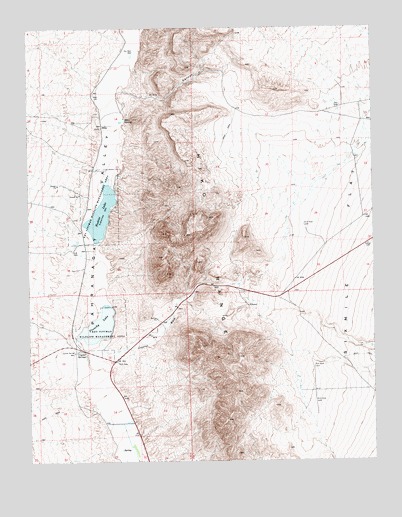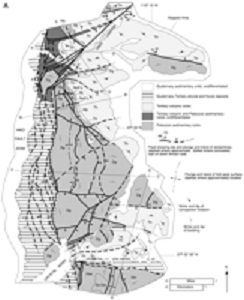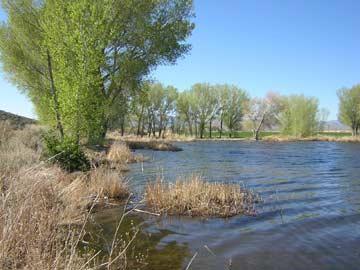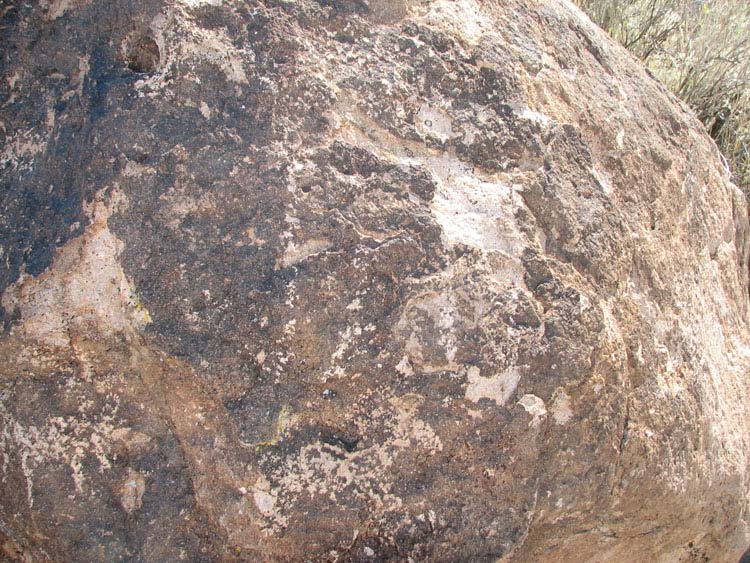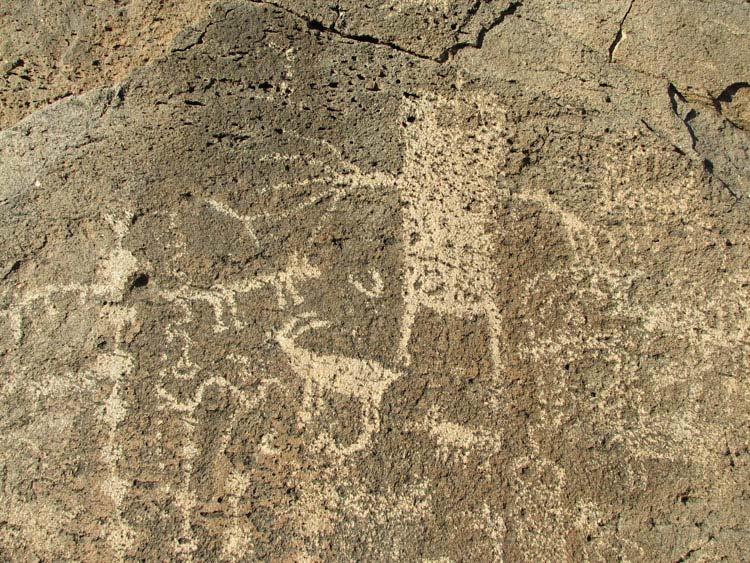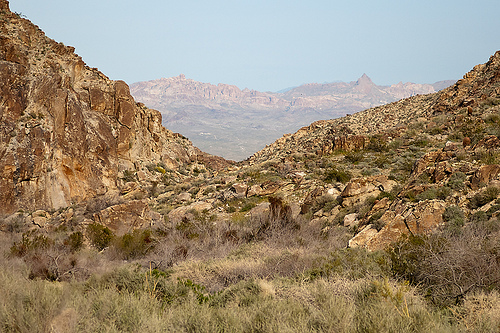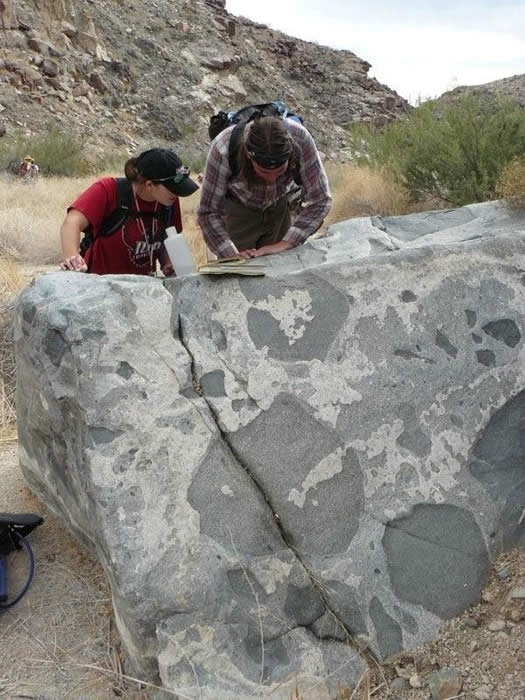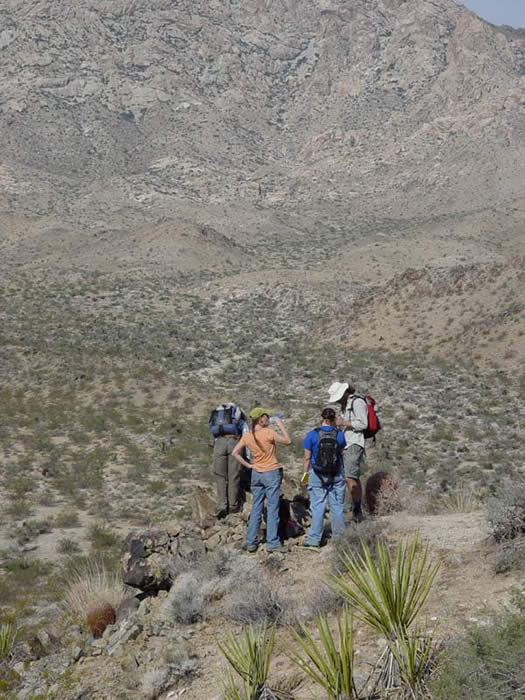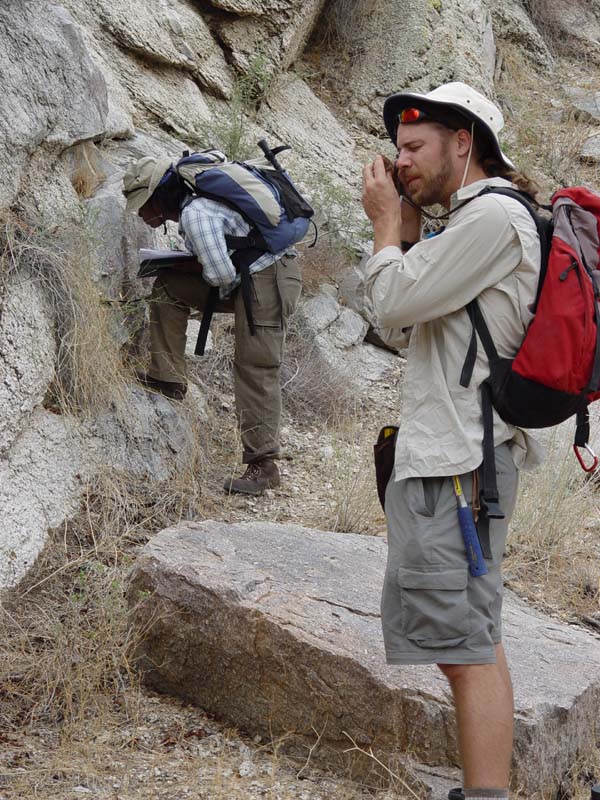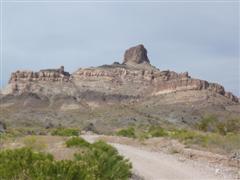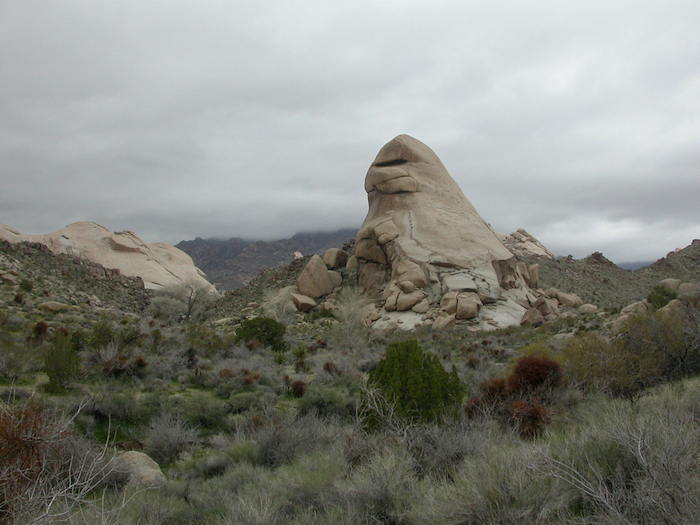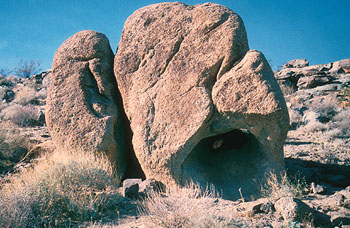 | Spirit Mountain Batholith |
http://www.topoquest.com/map-detail.php?usgs_cell_id=70379 |
Hiko canyon |
Nesbitt lake |
Hiko Canyon Petroglyph Sites -http://www.nevadarockart.info/hikocanyonpetroglyphs.htm |
http://www.nevadarockart.info/hikocanyonpetroglyphs.htm |
Hiko Canyon |
Hiko Canyon - The rock contains three magma types: diorite, fine-grained granite, and coarse-grained granite that dramatically display magma mingling and varying degrees of mixing http://www.cefns.nau.edu/Academic/Geology/news/field_trips/Sprit_Mt_FT.shtml |
The mafic sill with Spirit Mountain as back drop. The mafic sill is near the contact of the Spirit Mountain batholith and the Proterozoic granite-gneiss. The main granitic body of the batholith is in the close background, and the ridge in the far background is the high-silica leucogranite roof of the batholith |
Dikes in Hiko canyon |
Mount Irish -http://www.blm.gov/nv/st/en/fo/ely_field_office/blm_programs/wilderness/wilderness_area_information/mount_irish_wilderness.html |
Secret Pass Canyon Volcanic Center |
Spirit Mt. Btl http://people.oregonstate.edu/~walkerba/SMB.html |
SM granite |
The Spirit Mountain Batholith locates in southern Nevada. The pluton is a large (250 km2), Miocene-age, composite silicic intrusion. Tilting, uplift and erosion have exposed a complete cross section, from the roof to deep levels of the intrusion. U/Pb data on zircon reveal 2 million years of igneous activity, and exposed field relations suggest a complex history of injection, mingling, and mixing of a variety of magma types
Tracking magmatic processes through Zr/Hf ratios in rocks and Hf and Ti zoning in zircons: An example from the Spirit Mountain batholith, Nevada
L. Lowery Claiborne1, C. F. Miller1, B. A. Walker1, J. L. Wooden2, F. K. Mazdab2 and F. Bea3
1 Earth and Environmental Sciences, Vanderbilt University, SC 5717 Science & Engineering Bldg., Stevenson Center Dr., Nashville, TN, USA
2 US Geological Survey, USGS-Stanford Micro-isotopic Analytical Center, Stanford University, Green Building, 367 Panama St., Stanford, CA, USA
3 Department of Mineralogy and Petrology, Campus Fuentenueva, University of Granada, 18002 Granada, Spain
* E-mail: lily.e.lowery@vanderbilt.edu
Zirconium and Hf are nearly identical geochemically, and therefore most of the crust maintains near-chondritic Zr/Hf ratios of ~3540. By contrast, many high-silica rhyolites and granites have anomalously low Zr/Hf (1530). As zircon is the primary reservoir for both Zr and Hf and preferentially incorporates Zr, crystallization of zircon controls Zr/Hf, imprinting low Zr/Hf on coexisting melt. Thus, low Zr/Hf is a unique fingerprint of effective magmatic fractionation in the crust. Age and compositional zonation in zircons themselves provide a record of the thermal and compositional histories of magmatic systems. High Hf (low Zr/Hf) in zircon zones demonstrates growth from fractionated melt, and Ti provides an estimate of temperature of crystallization (TTiZ) (Watson and Harrison, 2005). Whole-rock Zr/Hf and zircon zonation in the Spirit Mountain batholith, Nevada, document repeated fractionation and thermal fluctuations. Ratios of Zr/Hf are ~3040 for cumulates and 1830 for high-SiO2 granites. In zircons, Hf (and U) are inversely correlated with Ti, and concentrations indicate large fluctuations in melt composition and TTiZ (>100°C) for individual zircons. Such variations are consistent with field relations and ion-probe zircon geochronology that indicate a >1 million year history of repeated replenishment, fractionation, and extraction of melt from crystal mush to form the low Zr/Hf high-SiO2 zone.
KEYWORDS: zircon, hafnium, zirconium, high-silica granite, Ti-in-zircon thermometry, fractionation
http://minmag.geoscienceworld.org/cgi/content/abstract/70/5/517
The Spirit Mountain batholith and Secret Pass Canyon volcanic center: A cross-sectional view of the magmatic architecture of the uppermost crust of an extensional terrain, Colorado River, Nevada-Arizona
Abstract
Extreme extension along the Colorado River has exposed the shallow to mid-crustal Spirit Mountain batholith and the roots of the roughly coeval Secret Pass Canyon volcanic center. Examination of the Spirit Mountain batholith reveals evidence for multiple replenishment and rejuvenation over a two million year period (ca. 17.515.3 Ma), with extensive coarse cumulate granites and leucogranite (high-silica rhyolites) sheets, mafic-felsic mingling and mixing, and a major dike swarm. The roots of the possibly related Secret Pass Canyon volcanic center comprise a large, very shallow, composite laccolith and smaller dikes, sills, and a volcanic neck. The volcanic sequence was emplaced within about a one million year period (ca. 18.517.3 Ma) and includes volcanogenic sediments, ignimbrites, domes, and block-and-ash flow deposits. An appended road log serves as a geologic guide to this magmatic region
http://fieldguides.gsapubs.org/content/11/187.abstract
Temporal changes in fault strike (to 90°) and extension directions during multiple episodes of extension: An example from eastern Nevada
Wanda J. Taylor*1 and Douglas D. Switzer 1
+ Author Affiliations
1Department of Geoscience, University of Nevada, Las Vegas, Nevada 89154-4010, USA
Abstract
In areas with prolonged extensional histories or multiple episodes of extension, temporally distinct extensional fault systems, including dip-slip-normal, oblique-slip, and/or strike-slip faults, may form. These fault systems may be spatially distinct, overlapped, or completely superimposed, and different fault systems may have different fault strikes and extension directions. Although fault strike is not a very sensitive indicator of principal stress directions, changes through time in fault strike of as much as 90° exceed the uncertainty. Overprinted extensional fault systems of different ages with significantly different (to 90°) fault strikes and extension directions provide strong evidence of changes in the regional stress field with time.
Tens of millions of years of extension occurred in the Basin and Range Province of the United States and many temporally distinct fault sets formed through that time. We document at least four extensional episodes and the fault kinematics of each, where possible, in the central Hiko Range, eastern Nevada. The four Cenozoic extensional events are prevolcanic, synvolcanic, postvolcanic MiocenePliocene (?), and postvolcanic Pliocene (?)Quaternary. The prevolcanic faults strike north-south and are interpreted as footwall faults to the regional EoceneOligocene Snake-Stampede extensional system, which caused approximately east-west extension. The synvolcanic faults are late OligoceneMiocene age and strike east-west. Although they are rare and have minor offset, they accommodated north-southdirected extension. Postvolcanic faults, part of the Timpahute lineament, are approximately east-west striking normal and northeast-striking oblique-slip faults. They also accommodated approximately north-south extension during Miocene time. The northeast-striking left-normal oblique-slip fault set formed as new faults and records a change between north-south and east-west extension in Miocene time. Later east-west extension occurred along the Pliocene (?) to Quaternary Hiko fault zone.
These four overprinted extensional systems show two separate changes in normal fault strike of ∼90°, from north-south to east- west and from east-west back to north-south. Consequently, the extension direction similarly changed through time. We suggest that causes for the changes in direction of upper crustal extension include a change from stresses created by (1) plate interactions, which generated approximately east-west extension, to (2) mantle motions, which generated approximately north-south extension, and (3) back again. The extension related to mantle motions is associated with a band of volcanism that passed across the northern Basin and Range Province, moving generally from north to south, during the protracted period of extension. Therefore, a change from plate boundary or interaction-derived stresses to mantle- or volcanism-related stresses and back again is possible.
http://gsabulletin.gsapubs.org/content/113/6/743.abstract
The Spirit Mountain batholith and Secret Pass Canyon volcanic center
SMB
